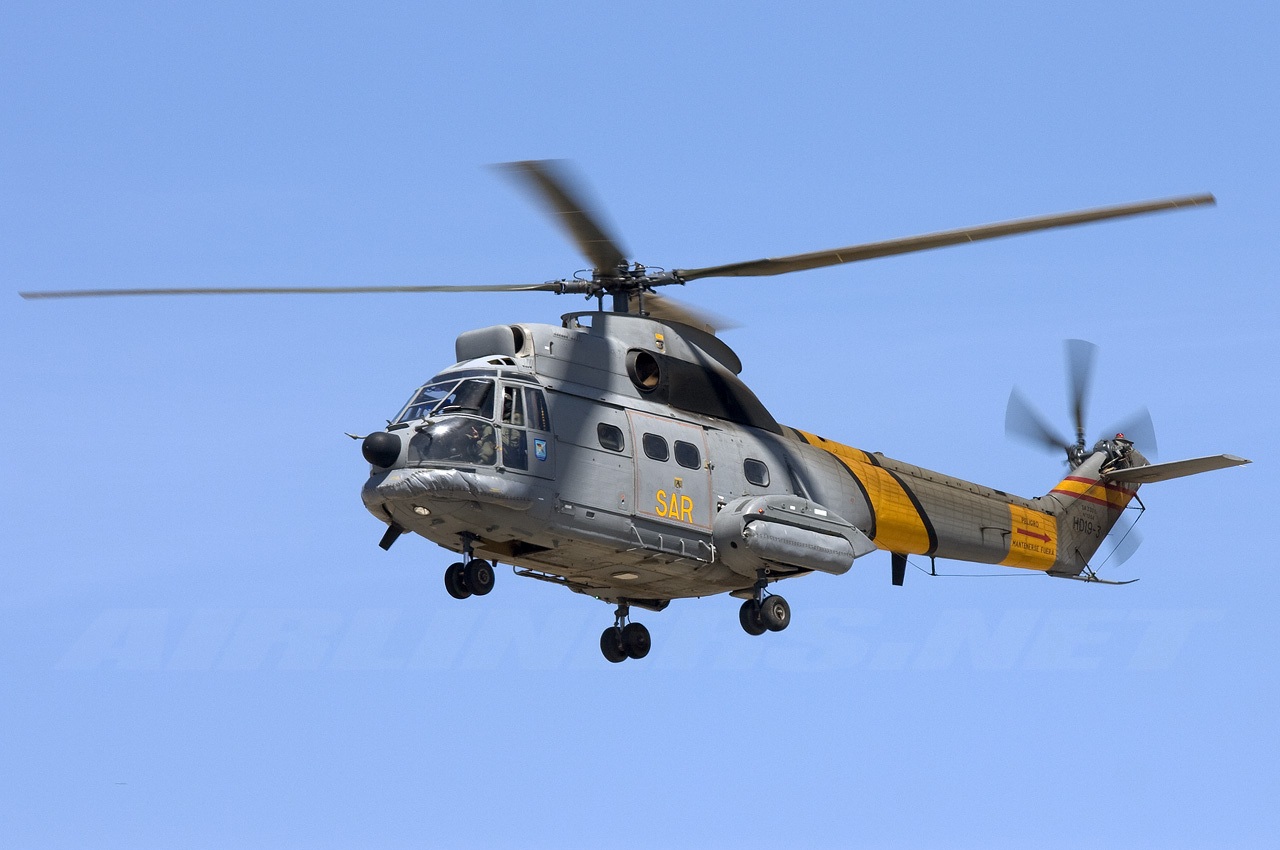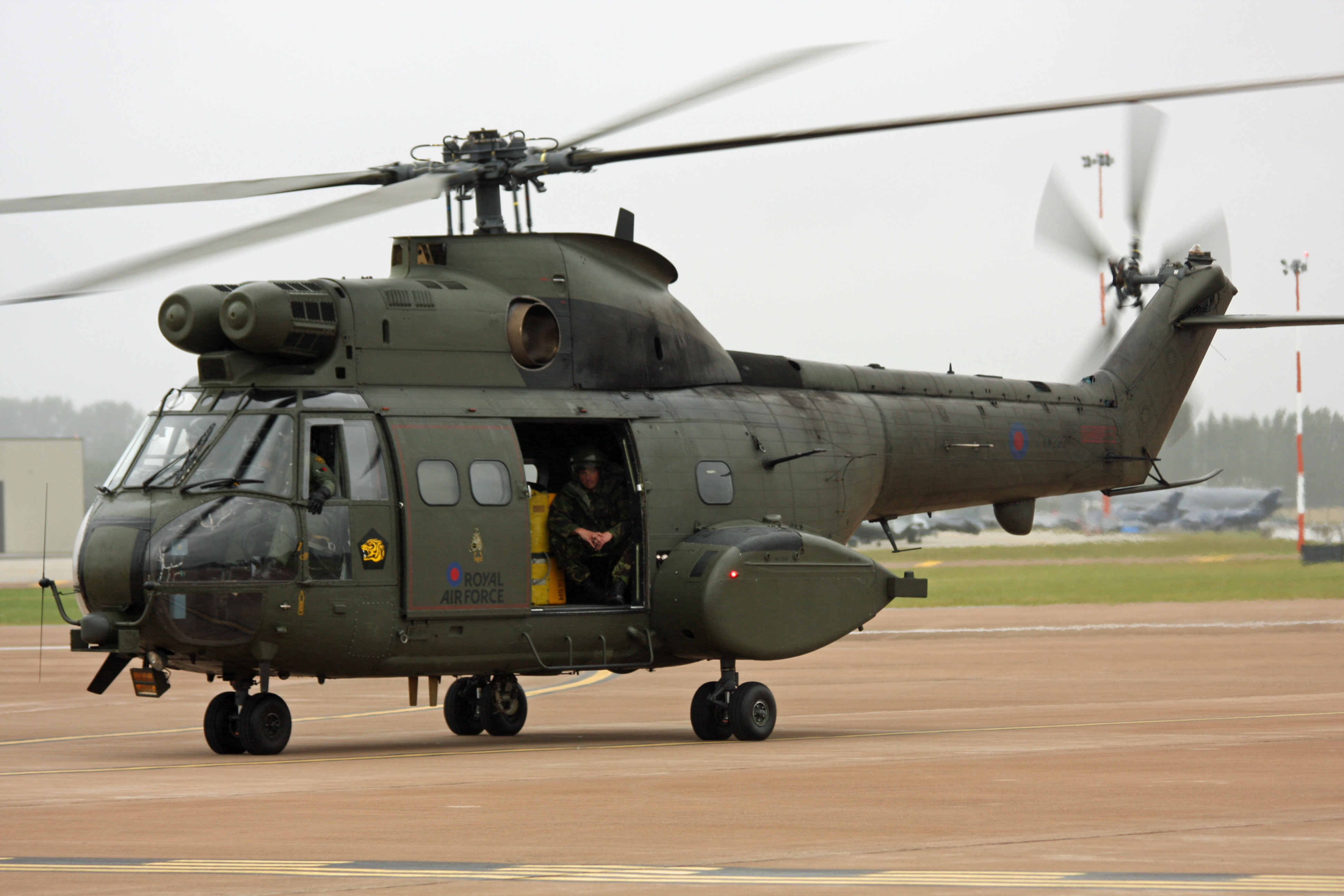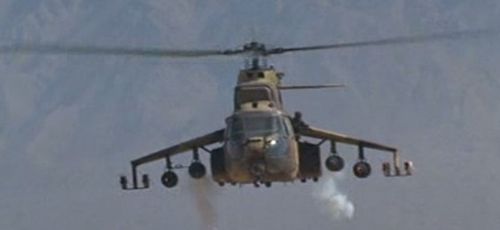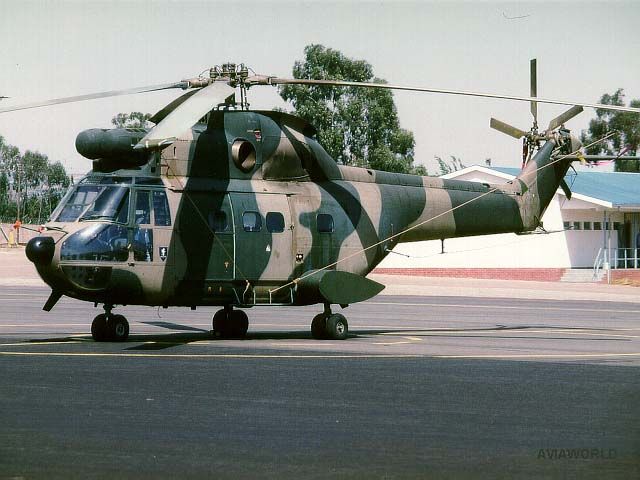
Aerospatiale SA-330 Puma
- CountryFrance
- TypeTwin engine medium lift helicopter
- PowerplantsSA-330J - Two 1175kW (1575shp) Turboméca Turmo IVC turboshafts driving a four blade main rotor and five blade tail rotor. SA-330G/F - Two 1070kW (1435shp) Turboméca Turmo IIIC4s.
- PerformanceSA-330J - Max speed 262km/h (141kt), max cruising speed at sea level 257km/h (139kt). Hovering ceiling in ground effect 7315ft. Initial rate of climb 1400ft/min. Max range with standard fuel 550km (297nm).
- WeightsEmpty 3766kg (8305lb), max takeoff 7500kg (16,535lb) with sling load, standard max takeoff weight 7400kg (16,315lb).
- DimentionsRotor diameter 15.08m (49ft 6in), length overall 18.15m, fuselage length 14.06m (46ft 2in), height 5.14m (16ft 11in). Main rotor disc area 177.0m2 (1905sq ft).
- CapacityCrew of one or two pilots on flightdeck, plus jumpseat. Passenger configurations in main cabin range from 8, 10 or 12 seat executive layouts, or for 17 to 20 passengers in an airline arrangement. A 3200kg (7055lb) external sling load can be carried.
- Production696 Pumas of different versions, including military, had been sold, when Aerospatiale production ceased in 1987. Westland assembled 48 SA-330Es as the Puma HC.Mk1. Limited production has continued in Romania by IAR, largely for that country's military. ICA and IAR have built over 160 as the IAR-330L. IPTN built 11 as the NSA-330J.
Puma which was known as the Sud initially is the highly successful medium lift helicopter variant designed by Aerospatiale. Puma was produced mainly for military use but was also used commercially.
Puma was produced to cater to the requirements of the French armed forces that needed a medium lift helicopter with all weather conditions operability. The first of the twin prototypes of the Sud SA had its maiden flight on April 15 1965 and the first mass manufactured aircraft flew on September 1968. Sud was incorporated into Aerospatiale in January 1970. The production of Puma received a boost by participation of Westland which was boosted by the Britain's Royal Air Force orders for the aircraft which used it as a tactical transport helicopter.
The SA-330B, C, E and H variants of the Puma were all intended for military use. Civil variants included the Turmo IIIC powered SA-330F passenger and SA-330G freight versions (first helicopters to be certificated for single pilot IFR operations in A and B conditions).
It was the SA-330J which led the mantle of the civil Puma aircraft. It has composite main rotors and an increased maximum takeoff weight. The SA-330J equipped with weather radar became the first helicopter in April 1978 to earn a certificate for all weather operations including flight in icing conditions.
SA-330s were assembled in small numbers by IPTN of Indonesia before it concentrated on production of the Super Puma. Aerospatiale stopped manufacture of Puma in 1987 and the sole production facility for Puma became IAR (originally ICA) of Romania.
The AS-332 Super Puma is a stretched development, and is described separately under Eurocopter.




